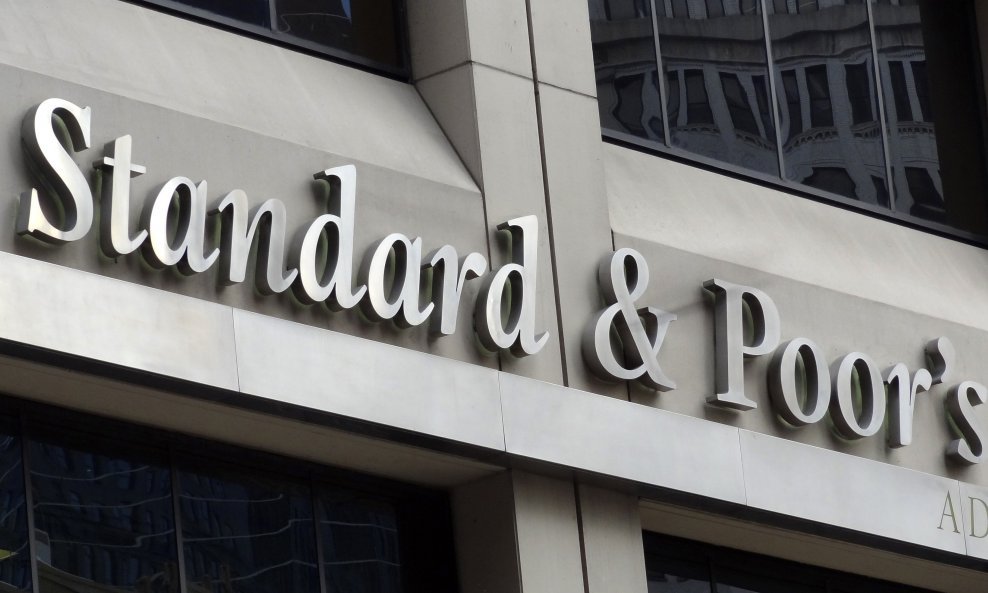Standard & Poor's Ratings Services on Friday revised its outlook on Croatia from stable to negative, but at the same time affirmed its BB+/B' long- and short-term foreign and local currency sovereign credit ratings.
The outlook revision reflects the agencies estimate that there is a more than one-in-three chance that prolonged weak economic performance, coupled with limited reform impetus, will lead to fiscal or external outcomes worse than we currently project.
"We see Croatia's recent EU accession as an important opportunity for addressing key growth, competitiveness, and productivity challenges. However, due to the co-financing requirement, and in the absence of government expenditure-side reforms, the EU funds now available to Croatia from the 2014-2020 EU budget (which amount to 3% of GDP annually) may not be used fully. Failure to draw on them would render Croatia a net contributor to the EU budget, " S&P said in a statement.
"In 2013, Croatia entered its fifth consecutive year of recession. Since 2008, real GDP has contracted by a cumulative 12%, mainly on the 12% decline in real consumption and 35% decline in real investment. For 2013, we project a further contraction of 1%. In 2014-2015, we believe that domestic demand will remain subdued as a result of private sector deleveraging and high unemployment. From 2014, we anticipate a modest recovery helped by the absorption of the EU funds, but we see increasing risks to this projection. Some of these relate to competitiveness and capacity challenges in Croatia's historically successful tourism sector. Overall, we consider real GDP per capita growth prospects--which we estimate will average 0.4% over 2007-2016--to be weaker than EU peers'," the statement read.
The agency said, however, there were some positive signs regarding reforms.
"The government has made recent announcements about state privatizations, proposed reforms of the business climate, labor law amendments, and planned pension reforms. In our view, however, the implementation of this agenda has so far been partial and reactive," S&P said.
The agency expects that when Eurostat publishes data related to the EU's fiscal notification in October, Croatia will face the activation of an excessive debt procedure (EDP). For 2013, the Croatian general government fiscal deficit will likely exceed 3% of GDP, with general government debt approaching 60% of GDP (the 3% deficit-to-GDP ratio and the 60% debt-to-GDP ratio are reference values defined in the Protocol on the EDP annexed to the Maastricht Treaty). If the debt of the Croatian Road Authority--which amounts to 7.5% of GDP--is assumed by the government as part of a concession arrangement, this would push the general government debt ratio up even higher: by the difference between the concession revenues and the debt assumed by the government.
S&P also believes that that pressure from the European Commission could potentially steer the Croatian government to focus more on fiscal consolidation on the expenditure side. The government has so far focused almost exclusively on the revenue side, including planned privatizations, and its efforts are now stalling as a result of low growth and growing interest payments as a reflection of rising government indebtedness, the agency said.
Croatia's current account is close to balance, with the past decade's prevailing deficits driven down primarily by declining imports. Exports of goods and services, which took a hit from the restructuring of the shipbuilding industry, remain below pre-2008 levels in real terms. As in much of emerging Europe, net FDI has declined from 6%-8% of GDP in the pre-crisis years to 2%-3% more recently, while bank financing from abroad fell sharply in 2012. Croatia's overall net external liability position remains high at around 200% of current account receipts (100% of GDP), leaving the economy dependent on external financing to service its high external debt. This debt amounts to about 60% of all external liabilities, the agency said.
"The Croatian central bank is committed to an informal kuna-euro peg, which limits monetary policy flexibility, as does the highly euroized economy (more than 70% of loans and more than 60% of deposits are denominated in or linked to a foreign currency). The predominantly foreign-owned Croatian banking system will continue to report low profitability given weak economic prospects, constrained by depressed domestic demand and moderate credit growth," read the statement.
According to the agency's analysts, credit risk in the economy is elevated.
"We expect nonperforming loans to continue to increase, driven by the weak performance of the real estate and construction sectors, and reach 18% of total loans by end-2013 while credit costs remain substantive. That said, we believe the local banking sector's capitalisation is adequate to absorb further deterioration in asset quality. However, we understand that this capacity could be challenged by the legal risks stemming from a recent claim related to mortgage lending in Swiss francs and associated compensation required for borrowers," Standard & Poor's said.

































